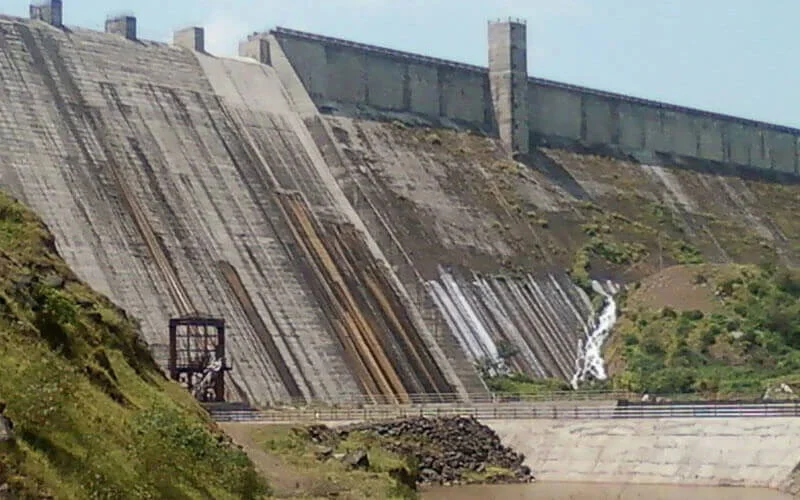Concrete dams are crucial infrastructures that provide water storage, flood control, and hydroelectric power. Over time, however, even well-built dams are vulnerable to wear and damage due to environmental exposure, heavy water flow, and chemical reactions in the concrete. Effective concrete dam repairs and waterproofing solutions are essential to maintain structural integrity and prevent costly failures or accidents.
Understanding the Causes of Dam Deterioration
Concrete dams face continuous stress from water pressure, seasonal temperature changes, and natural aging. Cracks, seepage, and erosion are common issues. Water infiltrating these cracks can weaken internal structures, corrode steel reinforcements, and reduce the overall lifespan of the dam. Environmental factors such as acidic rain, freezing temperatures, and chemical reactions within the concrete also accelerate deterioration, making regular inspections and maintenance critical.
The Importance of Timely Repairs
Ignoring early signs of damage can result in severe consequences. Even small cracks can expand over time, increasing the risk of water leakage and structural compromise. Timely concrete dam repairs prevent minor issues from escalating into major structural failures. Repairs also reduce maintenance costs in the long run and help ensure the dam continues to operate safely and efficiently, protecting surrounding communities and infrastructure.
Why Waterproofing Matters
Waterproofing is a proactive measure that protects the dam from water ingress. Concrete is naturally porous, and without waterproofing, water can seep into the structure, causing internal erosion and corrosion of reinforcing steel. Applying high-quality waterproofing solutions increases the dam’s durability, minimizes seepage, and reduces maintenance needs. Effective waterproofing also prevents secondary issues such as mold growth and chemical degradation of concrete.
Common Waterproofing Techniques
Several waterproofing methods are widely used for concrete dams:
- Cementitious Coatings: Easy to apply and cost-effective, these coatings form a rigid, durable layer that resists water penetration.
- Liquid Membranes: Flexible and seamless, liquid membranes provide long-lasting protection, even on irregular surfaces or joints.
- Polyurethane Coatings: These offer excellent flexibility and can adapt to structural movements without cracking.
- Bituminous Coatings: Ideal for high-moisture environments, bituminous coatings provide water resistance and durability over time.
Choosing the right method depends on the dam’s condition, exposure to water, and expected environmental stresses.
Grouting for Structural Integrity
Grouting is a crucial repair technique used to fill cracks, voids, and water paths within the dam. By injecting cementitious or chemical grout, engineers seal leaks and reinforce weak zones. This process restores structural stability and prevents further water infiltration. Grouting is particularly effective for seepage control and for strengthening areas that have suffered from prolonged water damage or erosion.
Structural Reinforcement Solutions
Some dams require additional reinforcement when cracks or deterioration compromise safety. Advanced methods include:
- Carbon Fiber Wraps: Lightweight but extremely strong, these wraps increase tensile strength and prevent further cracking.
- Steel Plate Reinforcement: Applied to critical sections, steel plates provide additional load-bearing capacity and resist deformation.
- Post-Tensioning Systems: These systems help restore structural balance in weakened areas, distributing loads evenly.
These reinforcement solutions are selected based on the dam’s condition, location, and type of stress it faces.
Choosing the Right Repair Materials
Material selection is a key factor in successful repairs and waterproofing. It’s essential to use materials compatible with existing concrete and environmental conditions. For instance, chemical-resistant coatings are ideal for dams exposed to acidic water, while flexible membranes are better for structures prone to slight movements. High-quality materials ensure repairs last longer and maintain structural integrity under pressure.
Regular Inspections and Professional Assessments
Periodic inspection by trained engineers is vital for dam safety. Professionals can detect subtle signs of damage, such as micro-cracks, seepage, or corrosion. Their assessments help prioritize repairs, select appropriate methods, and schedule maintenance effectively. A professional approach ensures compliance with safety standards and reduces the risk of catastrophic failure, safeguarding both the dam and the surrounding community.
Benefits of Comprehensive Dam Maintenance
Proper maintenance of concrete dams delivers multiple benefits:
- Increased structural longevity and resilience.
- Reduced seepage and water loss.
- Prevention of costly emergency repairs.
- Enhanced safety for surrounding areas.
- Preservation of hydroelectric and water management efficiency.
By combining repairs, waterproofing, and regular inspections, dam owners ensure their infrastructure remains safe, functional, and reliable.
Concrete dam repairs and waterproofing are critical for preserving the safety and efficiency of these vital structures. Addressing cracks, seepage, and structural weaknesses promptly ensures long-term stability and prevents costly failures. Employing the right repair techniques, using durable materials, and conducting regular inspections create a comprehensive maintenance strategy. For anyone responsible for dam safety, timely interventions and effective waterproofing are essential to protect both the infrastructure and the community it serves.
Related Reads
- Custom Fitness App Development: Build the Fitness App Your Users Actually Want
- Hoodie Outfits Gaining Popularity This Season
- Bortom skärmen: Kodning för barn bygger upp viktiga färdigheter för framtidens innovatörer
- How Much Does It Cost to Rent a Car in New York?
- Athletic Footwear Market Size, Share, Growth, Report Analysis, 2032
- First Aid Training in Washington: Essential Skills You’ll Learn Fast



